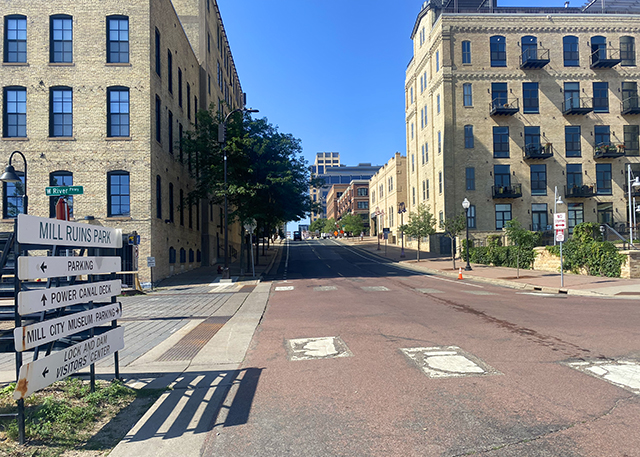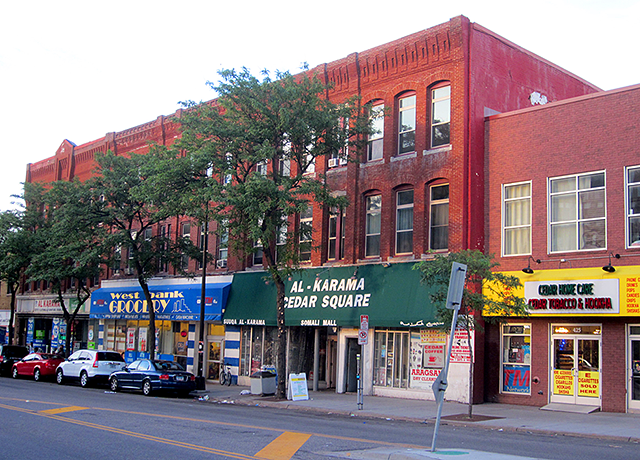As Minneapolis continues to see spats of criminal activity across the city, some neighborhoods have banded together to raise money for extra police patrols in an effort to help residents feel safer.
But some city officials and residents alike have raised concerns over how the program can operate given the department’s staffing woes, and whether the program creates inequity in policing for neighborhoods that can’t afford the extra patrols.
Crowdfunding public safety
The Minneapolis Police Department’s (MPD) “buyback” program is a contractual agreement between the city and an external organization or group in which the organization secures extra police presence and patrols by paying for officer overtime hours. The funding sources for the agreements have included state and federal grants, sports teams and venues wanting extra security for events, and neighborhood and business organizations. The contracts go to the city council for approval before officers can volunteer to sign up to work the extra hours.
Neighborhoods made up about 22% of the nearly 9,700 buyback hours worked by MPD officers in 2021, according to a presentation by the department to the city.
The Lowry Hill neighborhood, through a nonprofit called the Minneapolis Safety Initiative created by the neighborhood’s residents, secured a contract with the city earlier this year for $210,000 in extra police patrols at $107 per hour worked by an officer, starting Jan. 17 and running through Dec. 31. The nonprofit’s website calls the initiative a “temporary measure to address the current crime wave while MPD continues to rebuild to full staffing levels,” and suggests a donation of $220 per month for six months for the program to have its “desired impact.”
The Downtown Minneapolis Neighborhood Association (DMNA) started organizing its own fundraiser (but not a formal buyback agreement) for one off-duty officer to walk the Mill District downtown Thursday to Sunday from 6 p.m. to 10 p.m. from June 18 to Sept. 4. The GiveMN.org fundraiser, which has raised more than $4,800 of its $30,000 goal, credits Ward 3 Council Member Michael Rainville with coming up with the idea as a way to help residents feel safe while improving community relations with police by returning beat cops to busy corridors. Rainville declined to comment for this story, and the DMNA did not respond to multiple requests for comment.
What about other neighborhoods?
Paying for extra police patrols amid higher need during a crime wave may be a viable option for neighborhoods like Lowry Hill, where about 40% of residents make more than $100,000 a year, according to Minnesota Compass. But for neighborhoods like Cedar-Riverside where that number is just 5%, and more than 72% of residents make less than $35,000, it’s disappointing that a program like police buyback can be used by residents in upscale areas to gain more access to the public service that is policing, said AJ Awed, an executive director of neighborhood group the Cedar Riverside Community Council.
“I don’t believe safety should be measured or administered based on the economic tax bracket that you’re in,” Awed said. “When it comes to your safety, I don’t think money should be an object but unfortunately that seems to be the reality of the situation.”

MPD’s staffing woes have been well known, its rank-and-file numbers still recovering from an exodus of officers due to retirements, resignations and disability leaves after the protests and civil unrest following George Floyd’s killing under the knee of former Minneapolis officer Derek Chauvin. The department has 564 active officers at all levels as of June 18, according to Interim Chief Amelia Huffman. That’s still nearly 200 short of the charter-mandated 731 based on the city’s latest census numbers.
The department cites the buyback program as a way for MPD to target crime trends and hotspots, and to expand the pool of available hours for extra patrols or security for neighborhoods, businesses and large-scale events. But, Payne said, “it is really hard to hear the consistent drumbeat of the staff shortage, paired with apparently our officers having enough open capacity to do these additional patrols.”
“I think that’s a bit of the cognitive dissonance associated with the buyback program,” Payne said.
The Ward 1 councilmember said oftentimes the neighborhoods that have the highest needs have the least resources, and by allowing wealthier neighborhoods to tap into the total capacity of the police force disproportionately through programs like buyback, that means neighborhoods that have higher needs are going to see those needs go unmet.

Awed said he recognizes each neighborhood has different safety needs. While extra police presence would help combat violent crime, in the meantime his group can still work to treat causes of crime through methods like youth outreach and skills training programs.
“We can’t put money where our mouth is,” he said. “But we can definitely try to empower our kids with as many investments that we can get for our neighborhood, to try to do it in a way that empowers and builds the capacity for the neighborhood to deal with some of these underlying issues of safety.”


0 Commentaires